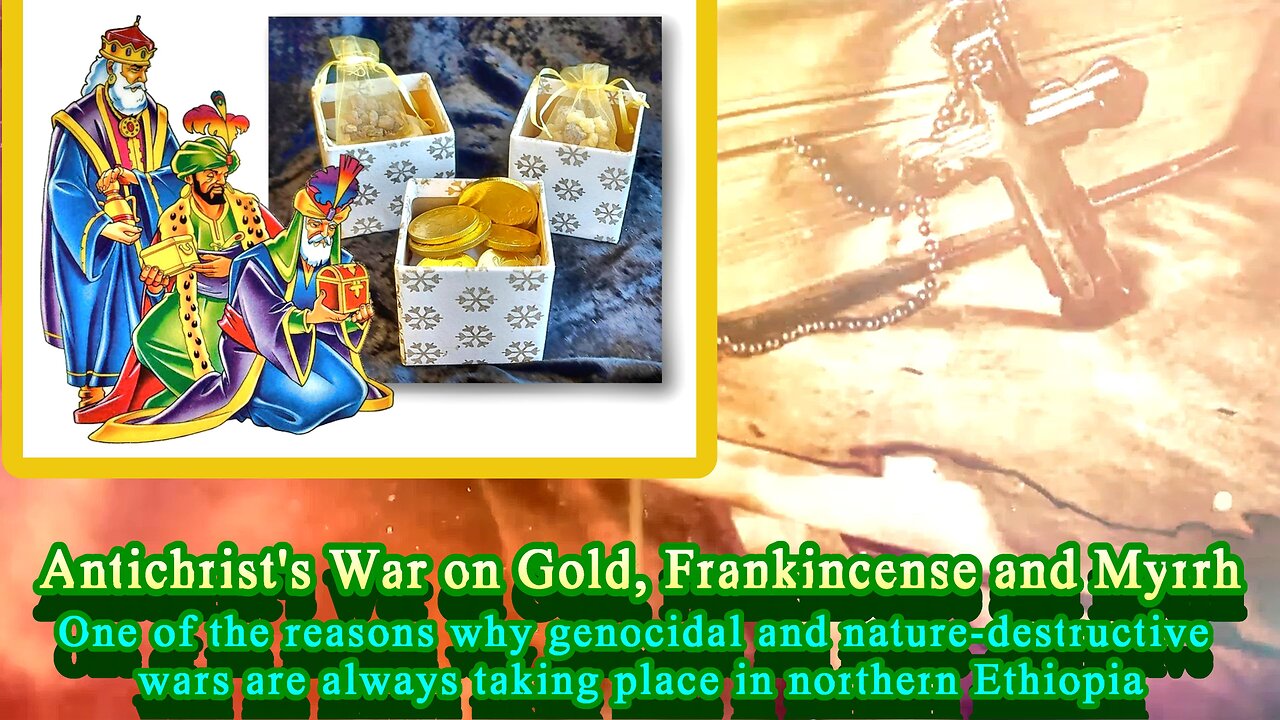Premium Only Content

How The West’s Wellness Industry is Driving Ethiopia’s Frankincense Trees Towards Extinction
🔥 The Age of Extinction 🔥
👉 Courtesy: The Guardian, Mon 16 September 2024
💭 In a corner of Covent Garden, well-heeled Londoners and tourists browse the range of frankincense products sold by a leading cosmetics brand while they drink a complimentary rose and berry tea. Amid the aromatic resin sheathed under glass, shoppers can buy “age-defying” serums, creams and essences, and tablets to strengthen brittle nails and hair.
At one counter, a sales assistant is advising customers on how much of the essential oil to add to their nebuliser to make guests feel relaxed “without overwhelming them”. Another explains frankincense’s “hydrating and rejuvenating” properties, including its alleged ability to smooth out fine lines caused by smiling and squinting. In terms of popularity, she says, it now far outstrips lavender, tea tree and other botanicals.
“Frankincense is our signature product – our bestseller,” she says.
It also fetches high prices. Here, a 50g bottle of frankincense firming cream costs upwards of £80, as does a 15ml vial of eye serum from a line sold next door. In another shop, a luxury French brand sells “virile” perfumes infused with frankincense for hundreds of pounds a bottle. An American aromatherapy company hails frankincense as the “king of essential oils” and claims it can promote cellular health and immunity. Their 15ml bottles retail at $115 (£88).
Frankincense has been harvested in the Horn of Africa and across the Red Sea in the Arabian peninsula for millennia. In ancient Egypt, it was prized for its deep, woody fragrance. The three magi are supposed to have brought a gift of it to the baby Jesus along with gold and myrrh, and many churches still burn it during services.
Until about 20 years ago, “the demand for frankincense was mostly from churches,” says Frans Bongers, professor of forest ecology and management at Wageningen University in the Netherlands. Recently, however, this ancient resin has become a hot commodity globally as its alleged health benefits catch the attention of the wellness industry, a sector worth about $5.6tn a year.
“Now big companies are buying up everything they can,” Bongers says. “Anything you can produce, there is a market.”
Frankincense extraction, however, remains firmly rooted in its ancient past. Supply chains are murky and fragmented, often marked by exploitation and violence, and dominated by middlemen, who skim off most of the raw resin’s value.
Although most western wellness companies claim to source their products ethnically and sustainably, it is often impossible to trace frankincense sold in New York and London back to the people who harvest it, often in extreme poverty.
And there is mounting evidence that the substance’s newfound popularity could be driving wild frankincense trees to the brink of extinction.
-
 9:07
9:07
MattMorseTV
16 hours ago $3.61 earnedTrump just BLASTED the CCP.
22.6K39 -
 58:44
58:44
The Official Corbett Report Rumble Channel
11 hours agoTurning the Tide on 9/11 with Curt Weldon
3.9K15 -
 10:47
10:47
Nikko Ortiz
15 hours agoThese Tik Tok Clips Are Extremely Painful...
17.4K3 -
 8:12
8:12
VSOGunChannel
17 hours ago $0.43 earnedATF Still Wants to Take Your Incomplete Guns
2.44K5 -
 44:06
44:06
Esports Awards
16 hours agoUber: The Voice of Overwatch, VALORANT & Esports’ Biggest Moments | Origins Podcast #27
1.52K -
 12:02
12:02
MudandMunitions
21 hours ago2,000 Rounds Prove Why the Glock 20 Gen 5 Is a MONSTER!
2.13K -
 39:06
39:06
Coin Stories with Natalie Brunell
2 days agoJeff Park on Whether the US Add Bitcoin to Its Reserves? | Coin Stories with Natalie Brunell
2.25K3 -
 2:54:07
2:54:07
The Robert Scott Bell Show
18 hours agoRFK Shifts CDC Focus, Dr. Sabine Hazan, Ellen Tart-Jensen, Iridology, Catharine Arnston, Algae Health - The RSB Show 9-3-25
5.19K2 -
 2:45:31
2:45:31
daniellesmithab
1 day agoAlberta Next: Medicine Hat Town Hall
7.26K -
 3:40:01
3:40:01
FreshandFit
9 hours agoEngaged Chick Gets EXPOSED For Having OF
71.1K110